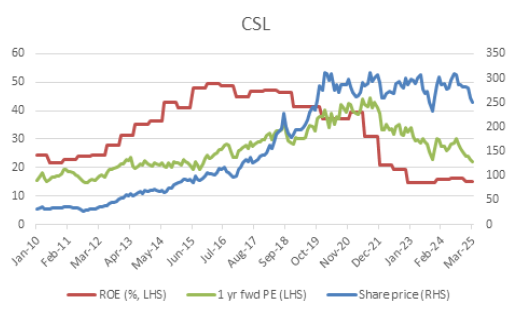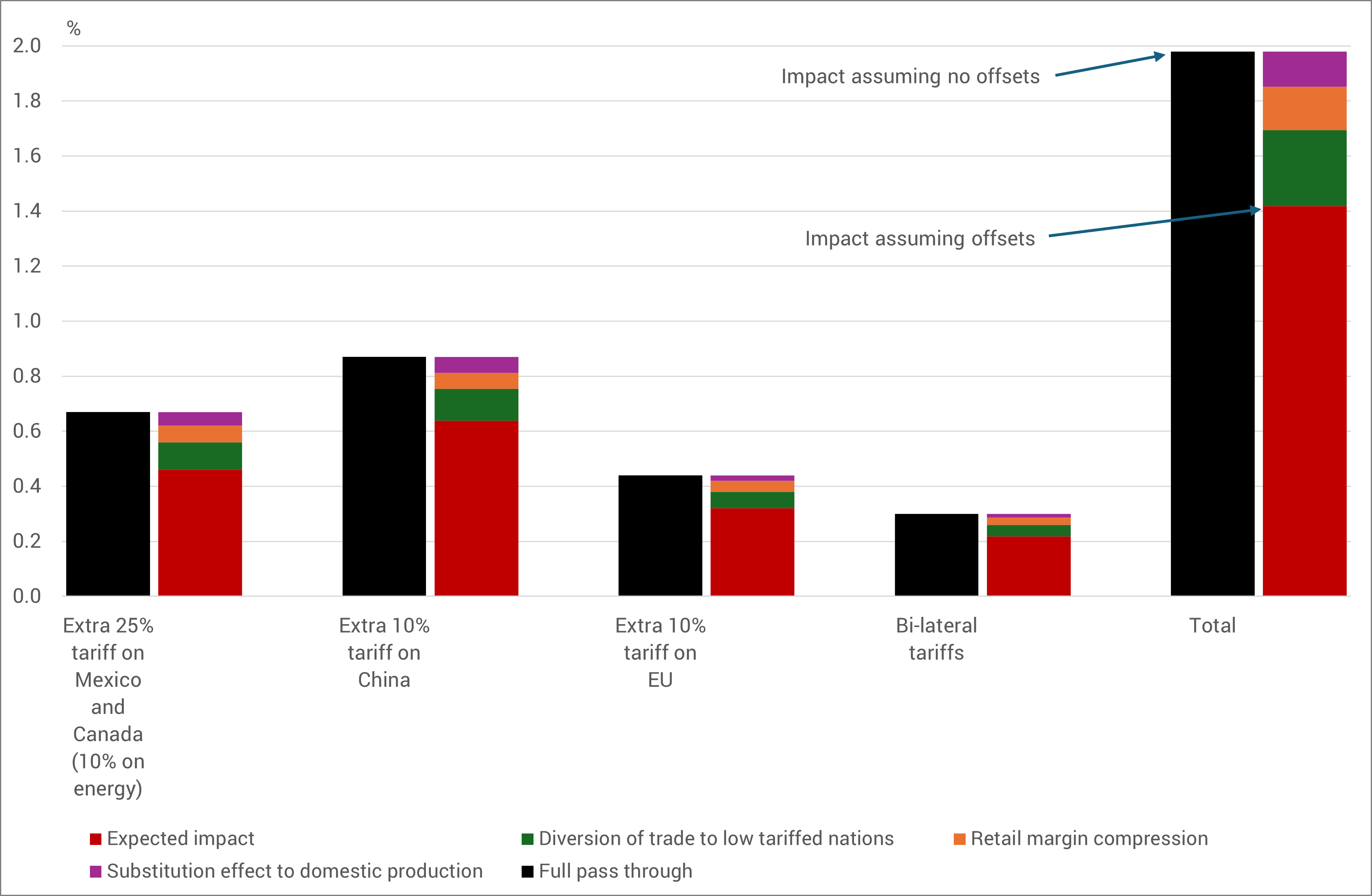NEWS

5 May 2025 - 10k Words | April 2025
|
10k Words Equitable Investors April 2025 Apparently, Confucius did not say "One Picture is Worth Ten Thousand Words" after all. It was an advertisement in a 1920s trade journal for the use of images in ads on the sides of streetcars... Passive investment in global equities appears to have continued on while active flows remain negative and foreign demand for US stocks reverses sharply. But in the US, momentum was the winning factor in the past volatile week and month, a factor small caps have been lacking, with small cap earnings growth over the past decade generally not accompanied by multiple expansion. Credit spreads have been on the rise and the correlation between credit spreads and the valuation of equities has also been increasing. The post-tarrif volatility has cut back the forward PE on the ASX sharply BUT it is worth bearing in mind that the ASX's largest companies were established in a more distant era than the dominant companies in the US, where multiples are higher. On the US - inflation was retreating nicely prior to the tarrifs but consumer confidence is at GFC levels. Finally, we divert to look at online penetration of lottery sales around the world. Flows into global equities 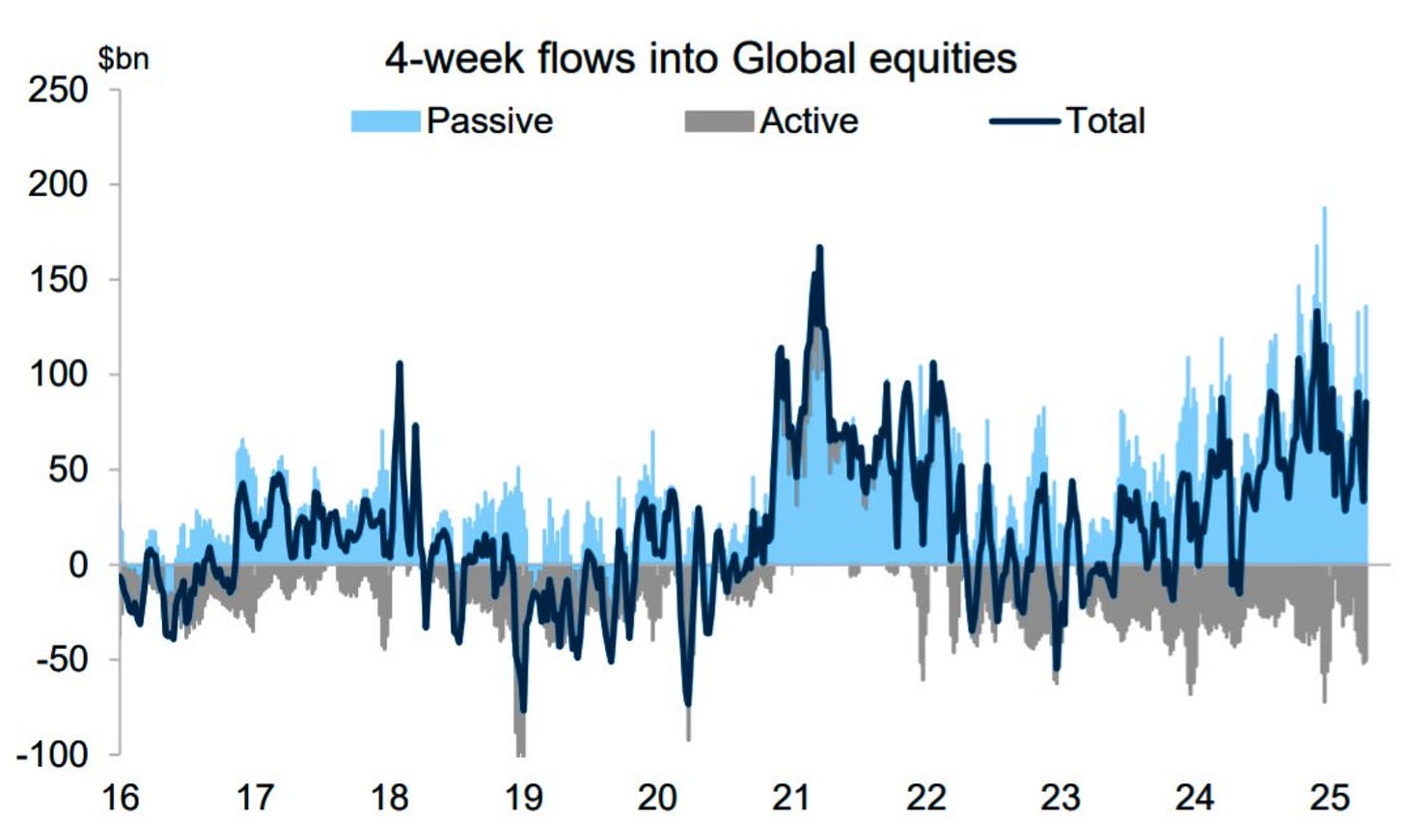
Source: Goldman Sachs Foreign official demand for US stocks 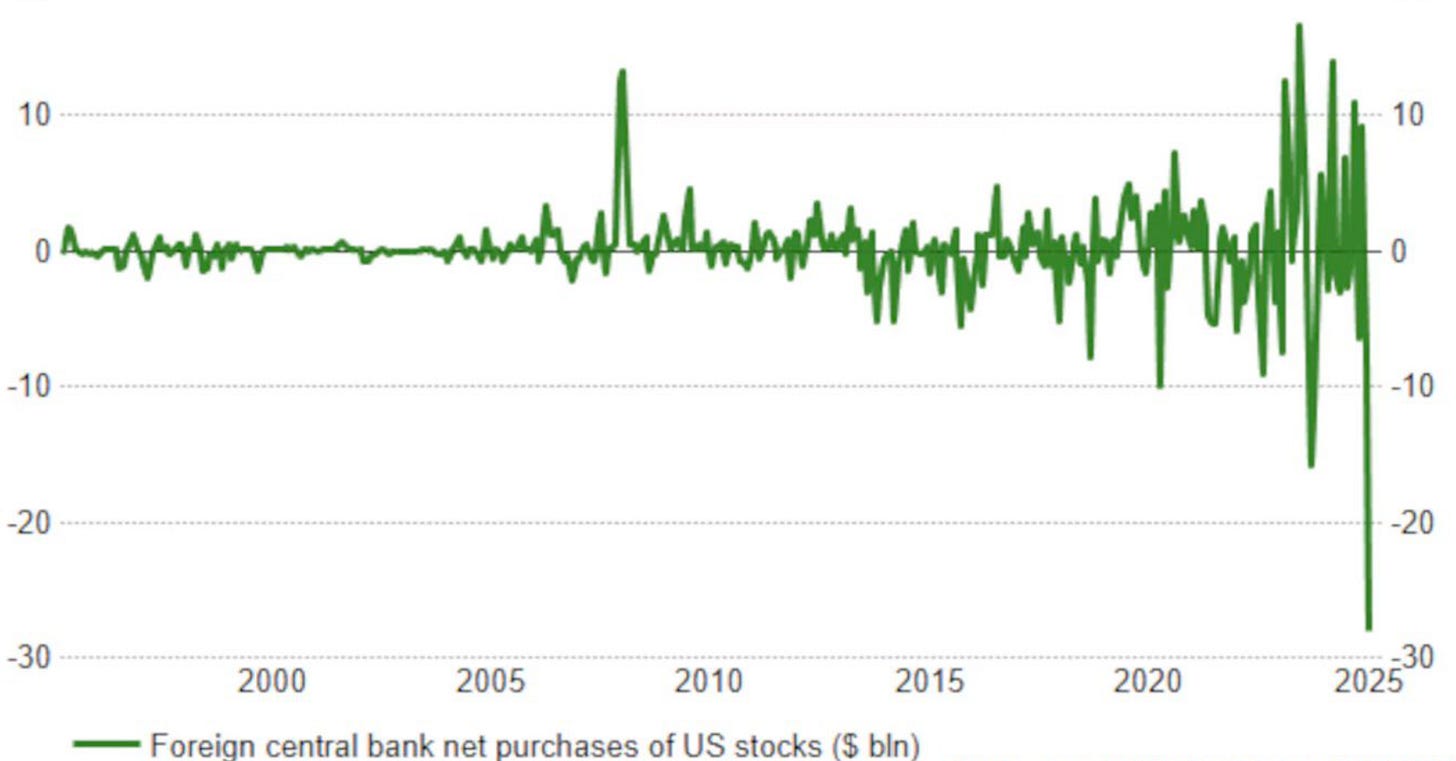
Source: Reuters, Charles Schwab US equity market factor performance as of end of last week (ETF factor proxies) 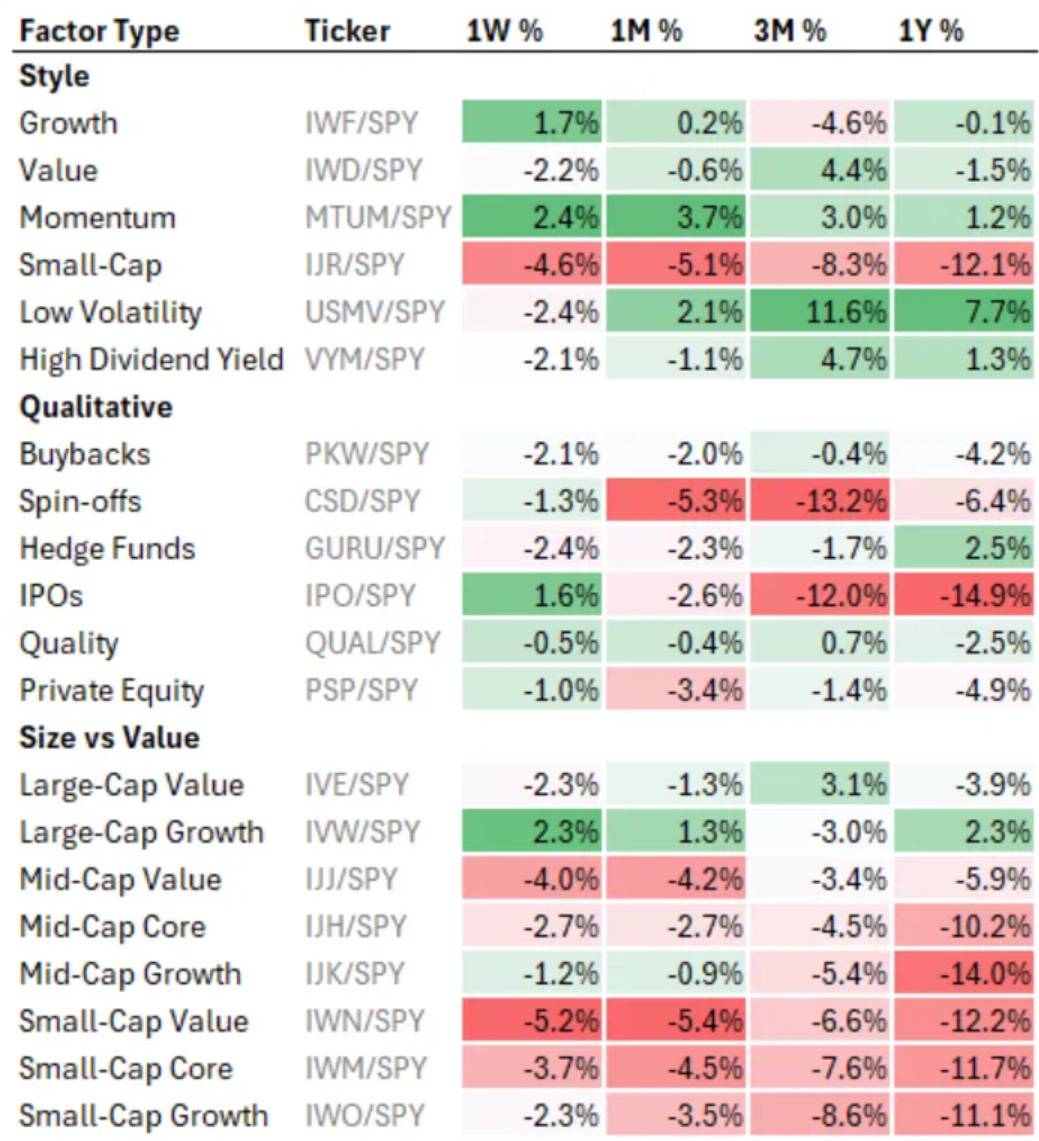
Source: Koyfin, Equitable Investors Strong earnings growth for small caps but their returns lagged as their valuation multiples remained more or less the same (2015-2024) 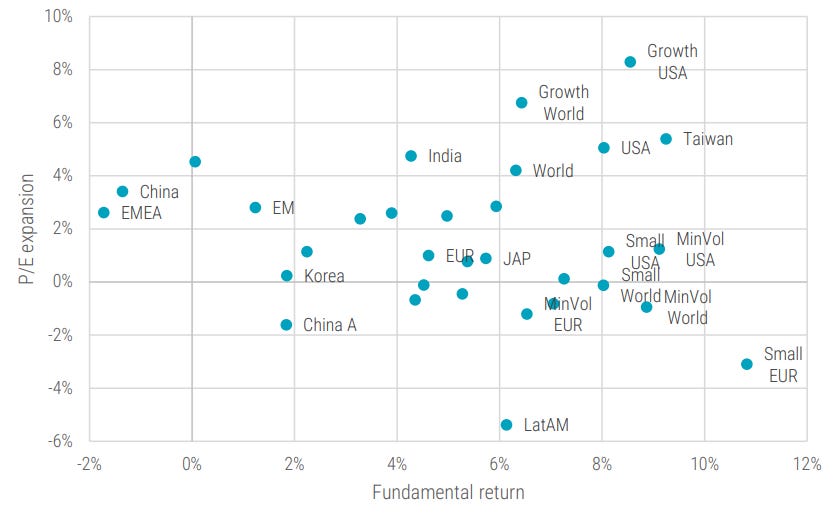
Source: Robeco ICE BofA US High Yield Index Option-Adjusted Spread 
Source: FRED Relationship between the S&P 500 forward PE multiple & credit spreads 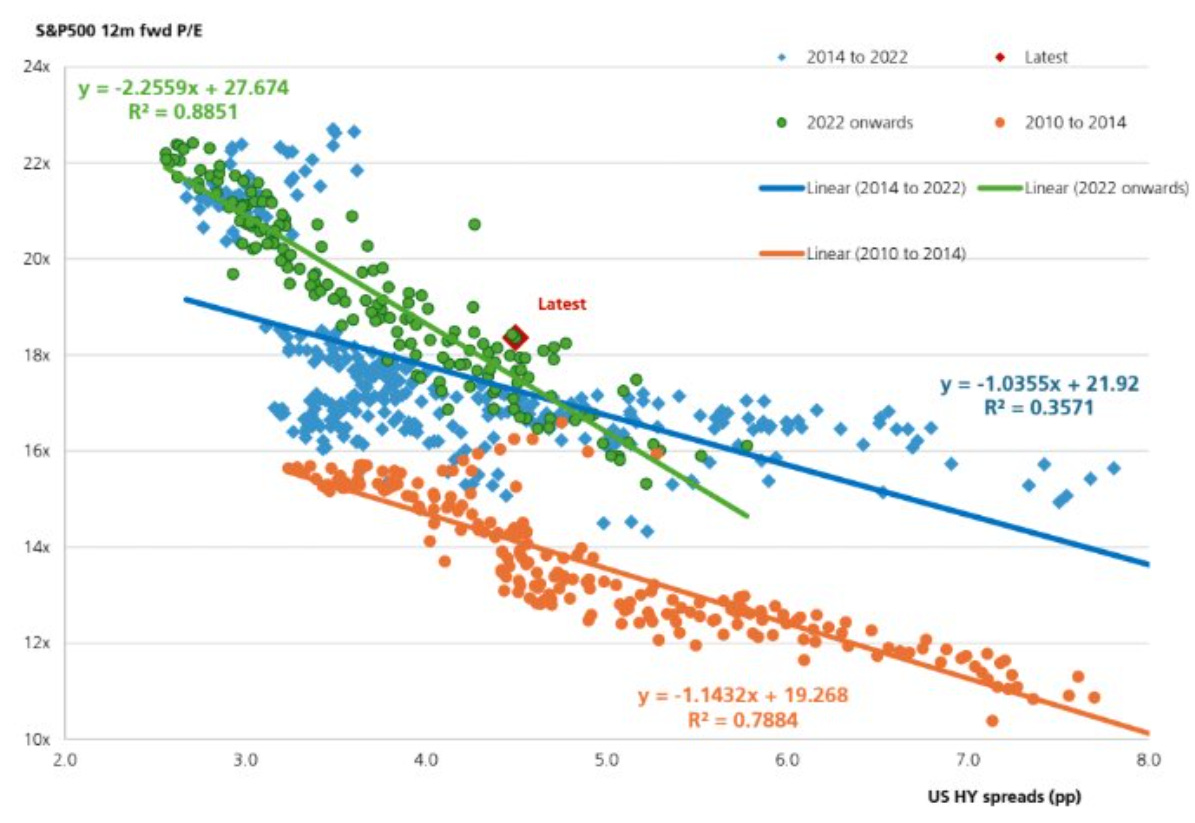
Source: UBS US & Australian government bond yield spreads (10 year v 2 year) 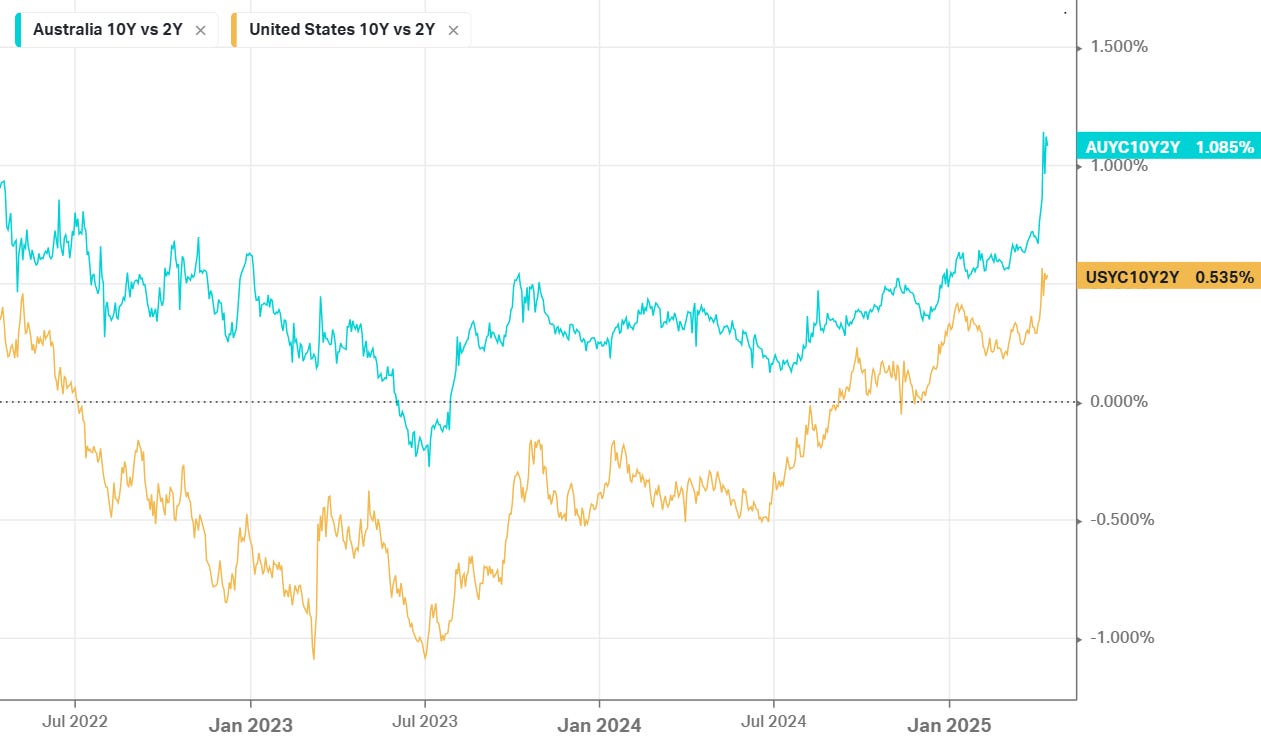
Source: Koyfin ASX forward PE multiple 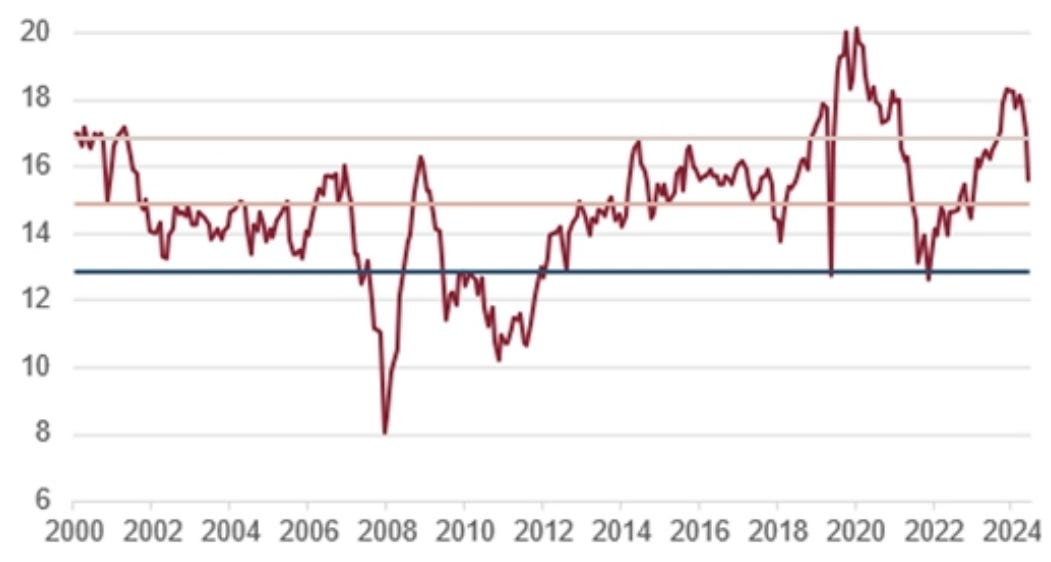
Source: Evans & Partners Australia's largest companies from a different era to the US 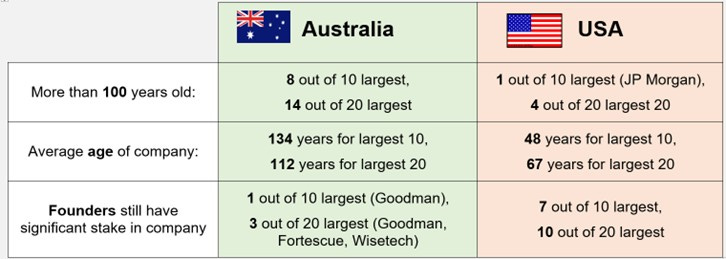
Source: Owen Analytics Forward PE on US equities 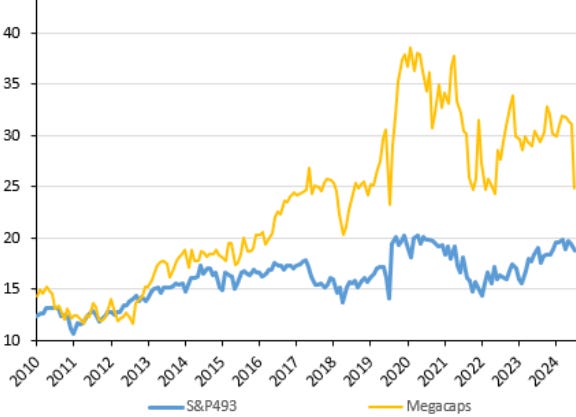
Source: Evans & Partners US core inflation had been falling sharply 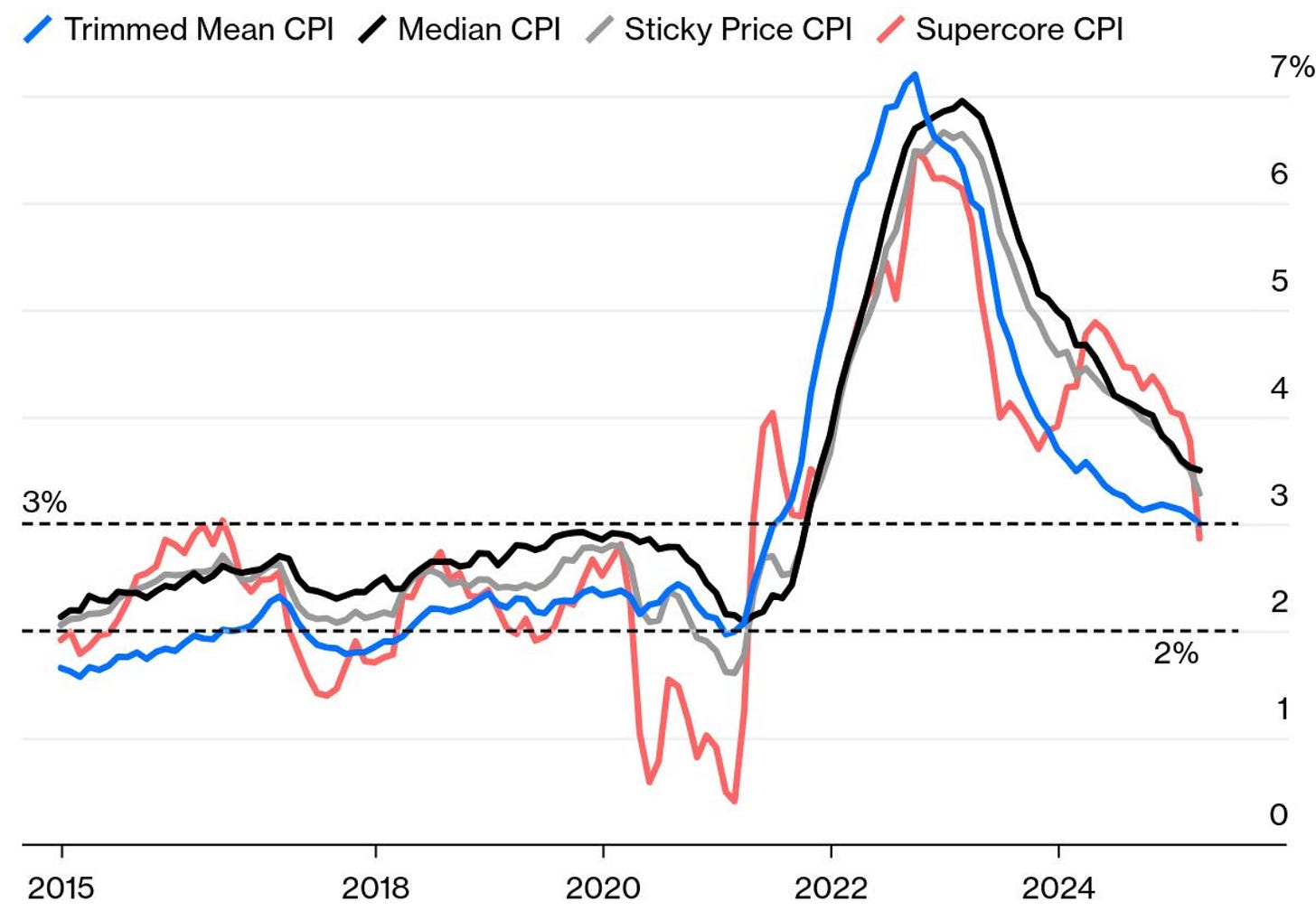
Source: Bloomberg US consumer confidence drops to GFC levels 
Source: Wilsons Advisory Online penetration of lottery sales Source: Jumbo Interactive (ASX code: JIN) April 2025 Edition Funds operated by this manager: Equitable Investors Dragonfly Fund Disclaimer Past performance is not a reliable indicator of future performance. Fund returns are quoted net of all fees, expenses and accrued performance fees. Delivery of this report to a recipient should not be relied on as a representation that there has been no change since the preparation date in the affairs or financial condition of the Fund or the Trustee; or that the information contained in this report remains accurate or complete at any time after the preparation date. Equitable Investors Pty Ltd (EI) does not guarantee or make any representation or warranty as to the accuracy or completeness of the information in this report. To the extent permitted by law, EI disclaims all liability that may otherwise arise due to any information in this report being inaccurate or information being omitted. This report does not take into account the particular investment objectives, financial situation and needs of potential investors. Before making a decision to invest in the Fund the recipient should obtain professional advice. This report does not purport to contain all the information that the recipient may require to evaluate a possible investment in the Fund. The recipient should conduct their own independent analysis of the Fund and refer to the current Information Memorandum, which is available from EI. |

2 May 2025 - Increased Market Volatility - A 2025 Update
|
Increased Market Volatility - A 2025 Update Eiger Capital April 2025 In early 2024 we wrote a note attempting to quantify the perception that volatility around results during the February 2024 interim results season had increased materially. The VibeThe AFR wrote an opinion piece on March 3, 2024, noting that the corporate reporting season was not the sleepy affair it once was. They noted, using the 20% positive and negative share price reaction of Reece and Corporate Travel respectively as examples, that the days of subtly guiding the market to a safe low volatility consensus appear to be over. The AFR noted that in their opinion that Reece tended to be less willing to constantly update the market while Corporate Travel was more inclined to provide incremental updates between formal semi-annual reporting dates. They then noted that neither approach seemed to have, in this instance, achieved the lower volatility outcome perhaps desired by the requirement for continuous disclosure. The ongoing refinement of Factset, Bloomberg or Visible Alpha consensus data, that is available to anybody who is prepared to pay for it should you would think, other things being equal, also make it easier to minimise result day volatility. REH, CTD ASX: Corporate Travel and Reece trip up traders in wild reporting season (afr.com)1 The Australian also wrote an article on March 8 titled:
Woolworths, Qantas, other corporate shocks the result of poor communication | The Australian2 As a small and mid-cap manager we are not as familiar with the ASX top 50 stocks mentioned in this article other than to note that we believe that ASX 50 stocks tend to be less volatile than small and mid-caps. This article refers to a 17% decline in the result day share price of Lend Lease which appears to us to be small cap like in its quantum. Top-down numbersAn analysis of the S&P ASX Small Industrials Index over the February 2024 reporting season indicates that the size of forecast EPS revisions has reverted to pre - COVID levels. Updating this chart confirms this conclusion. The August 2024 and February 2025 EPS revisions are low and in line with February 2024.
The standard deviation of EPS revisions in February 2024 was in line with the period from February 2016 to August 2019. By February 2020 COVID had already become widespread in China, Italy and Iran and was beginning to rapidly spread. From mid-February 2020 to the end of that month the ASX 200 fell just over 9% having risen slightly in the first half of that month. The reporting periods from August 2020 to August 2023 have seen elevated EPS revisions as economic activity was very unevenly distributed with some sectors being significant winners (e.g. home delivery and home furnishings) and some significant losers (e.g. travel). During the COVID reopening period from early to mid-2022 there have still been significant variations in earnings outcomes as global supply chains have struggled to normalise and energy prices were disrupted by the start of the Russia- Ukraine war.
In addition to the variance of EPS revisions across the Small Industrials index declining in February 2024 the correlation of positive and negative revisions to the share price reaction increased back to the top end of the range witnessed prior to the onset of COVID. This is also confirmed by the addition of data from August 2024 and February 2025 data. Finally at the Small Ordinaries index level volatility remains low and at pre-COVID levels. The following chart highlights that the two significant spikes in index volatility were in 2008-2009 (Global Financial Crisis) and 2020-2021 (COVID). This is also confirmed by updating this data to the February 2025. Bottom-up NumbersThe updated analysis above suggests that the conclusion previously reached that the variability of earnings revisions has fallen. Share price reactions are at least in the expected direction given an upward or downward earnings revision and the overall volatility of the Small Ordinaries Index remains at low levels. Does it therefore follow that, as noted in the business press, that reporting seasons are now but a dull affair? In attempting to look at this further we have compared the variability of monthly stock returns with the dispersion of the intra-month share price high and low. The x-axis takes the individual stock return over the relevant month and calculates their variability. So, for example the variability of stock price returns in February 2020 was extreme. There was a very large spread of high and low returns that month. By comparison the variability of returns in February 2024 was lower and more in line with the upper end of the normal range. The reporting period with the lowest variability of monthly reporting season returns in our analysis was August 2021. So individual stock returns in the month of February 2024 were not outside historic ranges, However the story does not end there. The y-axis measure what happened within the month to individual stocks. This axis takes the intra-month high and low for an individual stock and measures the size of that dispersion. By contrast this was by far the highest recorded in our analysis. The evidence revealed by adding August 2024 and February 2025 is that overall stock return volatility has remained within a historic band (x-axis). The evidence around intra-month high and low share prices is less clear. The dispersion of high and low prices for individual stocks has remained above historic bands but the dispersion declined in August 2024 and again in February 2025. The outcome for February 2025 is still above the historic band but not significantly so.
A couple of anecdotesWhile not the central thesis of this note, and perhaps delving into day-to-day stock movement, it seems interesting to highlight a couple of slightly absurd stock price movements during February to continue to highlight changes in market structure and behaviour. Audinate released its result on February 14 and the share price promptly increased 37% over the next few days. By March 7 the price was back to the mid-February starting point and by the end of March was 18% lower. So can we conclude that somebody (or something) decided the result was better than expected (hence the initial reaction and likely short covering) but that within a relative short period of time the reverse was likely. The result was in fact worse than expected hence the price fall of 40% from the peak. Our view is this is likely a combination of reduced liquidity and a series of decisions made by a something (not a someone). We would love a proponent of the efficient market hypothesis to explain this. Shifting to a slightly bigger stock than Audinate (which at $10 has a market capitalisation of around $800m) to one of the stocks noted for volatility in February 2024, namely Corporate Travel. Corporate Travel announced their interim result on February 18 and promptly the share price increased by 18% by February 21. By the end of March, the share price was down to $13.91 or 8% below the pre result price and 22% below the peak also on February 21. There may have been other news over this time period, but you would think the dominant news would have been the result. You would think it was either A: Better than expected or B: worse than expected. It turns out that as with Audinate there are decisions being made by somebody or something that mean that neither is the correct answer. The correct answer is C: it was both better and worse than expected. Go figure. Liquidity?In April 2025 as in April 2024 we have a view that there could be an overall decline in continuous disclosure. This is despite a steady increase in consensus data availability and a steady increase in the level of detail notably by the widespread use of Visible Alpha in the Australian market. This is backed up by noting that the size of EPS revisions and their immediate impact on share price reactions appears to have returned to pre COVID levels. Overall index volatility remains within normal levels and certainly nowhere near GFC or COVID levels. Overall monthly return volatility is also normal but intra-month volatility increased materially in February 2024 and has declined to still elevated levels over the subsequent levels. The following chart highlights the rolling 12-month liquidity of the small ordinaries index. Once again, we can see the significant spikes caused by COVID as portfolios were repositioned at the start and toward the end of the pandemic. What appears to be the case though is that the velocity of turnover relative to the size of the index is at or close to historic low levels. What could be the causes of this? One possible explanation is the lack of IPOs in the last few years. There is little doubt IPO's increase overall liquidity for a short period of time but in our experience, this normalises within a week at most. Takeover activity similarly briefly increases liquidity significantly on the day a bid is announced. There can also be significant periods of liquidity in a takeover as shares swap hands between long term investors and shorter-term takeover specialists as a takeover is finalised. The downside of a takeover is that ultimately it may reduce the size of an index leading to less opportunities for long term investors. We believe a factor worth considering is the impact of passive and near passive investment management. Global ETF's and index funds, that trade based on their own flows and not necessarily daily fundamental news flows, appear to own around 20% based on the information available in Factset. In addition to this investment, we believe there would be additional difficuly to quantify holdings by wholesale passive funds who manage money on behalf of institutional holders either internally or externally. There are also strategic holdings in some companies, notably those that are very long duration and infrastructure like that do not participate in market liquidity. Using the chart below the velocity of trading, if we exclude the COVID period, has fallen from around 70% to 56% at present. We do not think that it is implausible that the bulk of this decline is the accumulation of passive and near passive investment styles. This factor is likely to have impacted large cap indices earlier than small cap benchmarks as constantly rebalancing passive funds ironically is easier in more liquidity. In addition to reduced liquidity, that could be due to increased passive or other factors, we would note that we witness daily the impact of systematic investment managers. A systematic manager has a set style, often enhanced by algorithms that will trade with minimal human intervention. This style, well run forms a part of the broad church of management styles that make up a market.
Explaining the VibeWe believe that what the business reporters are witnessing isn't a breakdown in continuous disclosure but rather increased share price reactions to news based on the evolution of investment styles. Liquidity is currently at a low level and concurrently we believe that execution of large orders by systematic investors has become more aggressive. Will liquidity continue to structurally decline, and will short term volatility continue to increase? We aren't sure but either way it doesn't concern us as we plan to maintain a level of funds under management that will allow us the flexibility to execute our investment style. To some degree it may provide additional opportunities particularly if stocks continue to move aggressively and then rebound intra month. Author: Stephen Wood, Principal and Portfolio Manager 1. "Corporate Travel and Reece trip up traders in wild reporting season", Australian Financial Review, 3 March 2024. May require paid access to view full article. 2."What's to blame for corporate shocks this reporting season", The Australian, 8 March 2024. May require paid access to view full article. Funds operated by this manager: |

1 May 2025 - What an ancient philosopher can teach us about coping with market volatility
|
What an ancient philosopher can teach us about coping with market volatility Janus Henderson Investors April 2025 Wealth Strategist Ben Rizzuto shares timeless teachings from Greek Stoic philosopher Epictetus that may help investors navigate market volatility and uncertainty.
Recent events and the volatility they have created may have you rethinking investing, rethinking your asset allocation, and rethinking how much volatility you can handle. While we're all eager to get the latest news and guidance on tariffs and market volatility, a philosopher who lived between c. 55 - 135 A.D. may be just the person to turn to right now. The Greek Stoic philosopher, Epictetus, shared ideas on how to live one's life, and these timeless teachings ideas may help investors navigate these volatile times. Overall, it's important to stay invested. And while this emotional rollercoaster may be hard to stomach at times, below are three ideas that may make it a bit easier and help provide some perspective. What do you control?
You don't control the markets. None of us do. They go up AND down and have done so for decades. Your experience over the past few days is an experience many have had over the years. So, if you can't control the markets, what can you control? Our reactions to these external forces are key in markets like this. Over the past several days, you may have felt despair, anger, and frustration, and those emotions can lead to untimely errors like selling investments at the wrong time. Remember, a longstanding investing rule is to buy low and sell high. If you give in to these emotions and sell now, you'll being doing the exact opposite. The wisdom of long-term perspective
Unfortunately, for many investors, the emotions that are stirred during significant market shifts lead them to make drastic changes in their asset allocation. Loss aversion looms large during volatile markets; it demonstrates that we feel the pain of losses twice as much as the satisfaction we feel from gains. This pain may lead some people to move completely to cash, not only to limit losses, but also to gain a sense of control and security. But this is only a short-term fix: Once the markets return to normal, investors frequently fail to reallocate themselves appropriately and continue to be more conservative than they should be. As illustrated in the chart below, this leads many investors to miss out on gains when the market rebounds.
Source: FactSet Research Systems, Inc. from 1/1/99 - 12/31/24. The example provided is hypothetical and used for illustration purposes only. It does not represent the returns of any particular investment. The lesson is this: Your asset allocation will change over time. As you get closer to retirement, it will get more conservative, but this is a change that happens gradually over your lifetime and should not be based on short-term swings. The educated investor
While you don't need to become a professional investor, it is important to be educated on the markets from a historical perspective. There have been several corrections and recessions over the years. A correction is defined as a decline of 10% or more from the recent peak. A recession often defined as when the gross domestic product (GDP) growth rate is negative for two consecutive quarters. And we've seen corrections and recessions in 1990, 2000, 2008, and 2020, as well as several other periods. But if you look at history, you can see that staying in the market over the long term has paid off. Viewing the performance of the market over a short period of time can look like this: S&P 500® Index, February 19, 2025 - April 4, 2025
Source: Federal Reserve Economic Data, fred.stlouisfed.org. As of April 4, 2025. The trend illustrated above looks like a losing proposition. But if we zoom out, we can see that this only a small piece of a larger - much more favorable - picture. $1 invested in S&P 500 Index since 1970 History has shown that many investors who have taken the long view and stayed invested have been rewarded in the end. If you look at several past recessions, they look like bumps in the road along the path of long-term growth. That's why it's so important not to let short-term emotions distract us from our long-term goals. In fact, during these times, it might be a good idea to turn off the TV, stop looking at the markets, and contemplate some philosophy. Definitions S&P 500® Index reflects U.S. large-cap equity performance and represents broad U.S. equity market performance. Volatility is the rate and extent at which the price of a portfolio, security or index, moves up and down. If the price swings up and down with large movements, it has high volatility. If the price moves more slowly and to a lesser extent, it has lower volatility. The higher the volatility the higher the risk of the investment. |
|
Funds operated by this manager: Janus Henderson Australian Fixed Interest Fund, Janus Henderson Australian Fixed Interest Fund - Institutional, Janus Henderson Cash Fund - Institutional, Janus Henderson Conservative Fixed Interest Fund, Janus Henderson Conservative Fixed Interest Fund - Institutional, Janus Henderson Diversified Credit Fund, Janus Henderson Global Equity Income Fund, Janus Henderson Global Multi-Strategy Fund, Janus Henderson Global Natural Resources Fund, Janus Henderson Tactical Income Fund All opinions and estimates in this information are subject to change without notice and are the views of the author at the time of publication. Janus Henderson is not under any obligation to update this information to the extent that it is or becomes out of date or incorrect. The information herein shall not in any way constitute advice or an invitation to invest. It is solely for information purposes and subject to change without notice. This information does not purport to be a comprehensive statement or description of any markets or securities referred to within. Any references to individual securities do not constitute a securities recommendation. Past performance is not indicative of future performance. The value of an investment and the income from it can fall as well as rise and you may not get back the amount originally invested. Whilst Janus Henderson believe that the information is correct at the date of publication, no warranty or representation is given to this effect and no responsibility can be accepted by Janus Henderson to any end users for any action taken on the basis of this information. |

30 Apr 2025 - Manager Insights | East Coast Capital Management
|
Chris Gosselin, CEO of FundMonitors.com, speaks with Richard Brennan, Strategy Ambassador at East Coast Capital Management. They discussed the challenges and opportunities faced by trend following strategies during a volatile first quarter, the role of diversification across asset classes and geographies, and East Coast Capital's strong long-term performance, including the importance of dynamically adjusting portfolios to shifting market regimes. The ECCM Systematic Trend Fund has a track record of 5 years and 3 months and has outperformed the SG Trend benchmark since inception in January 2020, providing investors with an annualised return of 14.7% compared with the benchmark's return of 6.38% over the same period.
|

29 Apr 2025 - The Future of Transport: Innovations transforming how we move
|
The Future of Transport: Innovations transforming how we move Magellan Asset Management April 2025 |
|
Technologies ranging from electric vehicles and self-driving cars to drones and hyperloop systems are redefining how people and goods move. The implications are enormous. While these innovations promise greater efficiency, sustainability and convenience, they pose disruptive challenges to traditional transport sectors and adjacent industries. And like every major technological shift, there will be winners and losers. Investors who spot the right opportunities early stand to make the most, while those who ignore these trends will miss the bus. The rise of electric vehicles: A market on the move The transition from internal combustion engine (ICE) vehicles to electric vehicles (EVs) is no longer a question of "if" but "when". Governments worldwide are setting targets to phase out the sale of new ICE vehicles, with Norway leading the way and set to achieve this goal in 2025. The Australian Capital Territory is aiming for 2035. Automakers from Ford and Volkswagen to Mercedes Benz and Tesla are investing billions into the technology. For investors, the EV market is often synonymous with Tesla, but this market opportunity is much broader than just the automakers. Battery manufacturers are critical participants in the industry, helping to meet the growing demand for longer-lasting and faster-charging batteries. Meanwhile, charging infrastructure is a crucial adjacent industry to support the adoption of EVs globally, while electricity utilities will also play an instrumental role in this transition. The era of autonomous vehicles: A reality, not science fiction For years, self-driving cars were a concept confined to sci-fi movies. Today, they're real, and companies like Waymo (owned by Alphabet), Tesla, Wayve, BYD and a host of others are advancing at a rapid pace. Accomplishing self-driving has been a decades-long endeavour with two key 'problems' to solve - the software problem (aka the 'brain') and the hardware problem (aka the 'eyes and ears'). Solving the software problem has necessitated the development of a complex computing system with the ability to process information and make the right decisions under unique driving scenarios in an ever-changing external environment - an excruciatingly difficult task. Meanwhile, solving the hardware problem has required innovation in sensor technology (including camera, lidar1, radar2 and audio receivers) to bring costs down from astronomically high levels3. We are now closer than ever to solving both problems. Take industry leader Waymo for instance. Waymo already operates fully autonomous fleets of robotaxis in Phoenix, San Francisco and Los Angeles (and is expanding to 10 more cities, including Tokyo, in 2025). It is serving over 200,000 fully autonomous paid rides every week - 20x growth in less than two years. Importantly, Waymo's technology is already safer than human drivers with 78% fewer injury-causing crashes4. This safety record is a critical factor in achieving regulatory approvals in future markets. The implications? Enormous. Once freed from manual driving responsibilities, passengers in autonomous vehicles (AVs) have time to allocate as they please - likely benefiting entertainment and social media platforms like Netflix, Spotify, YouTube and Meta. Owning an AV means it could act as your personal chauffeur, ferrying family members to work or school or from one extra-curricular activity to the next, freeing up yet more time. Meanwhile, fleets of robotaxis will not only disrupt the taxi and ridesharing market operators but potentially forms of public transport too. As robotaxi adoption rises, personal car ownership could decline, hitting traditional automakers, dealers, car insurers and maintenance and repair services. Real estate (particularly parking) will be repurposed, while the value of residential property further from cities may rise. AVs will result in improved safety and fewer road accidents, affecting towing services and emergency services. As the hardware costs continue to fall and the software capabilities continue to improve, we believe mass adoption and commercial viability of AVs is inevitable. Urban air mobility and drones: Investing in the skies If roads become too congested, why not take to the skies? That's exactly what companies in the Urban Air Mobility (UAM) sector5 are planning. Delivery drones, flying taxis and cargo aircraft are set to reshape logistics and transportation. In the case of drone delivery, your dinner, medications and last-minute gifts could be at your doorstep in minutes, disrupting gig economy workers, as well as how we engage with brick-and-mortar retail. Companies like Wing (owned by Alphabet) and Amazon Prime Air are pioneers in drone logistics and stand to benefit if cost efficiencies can be achieved, particularly within last-mile delivery where over half of the total supply chain costs can often lie. The second-order effects could see reduced road congestion and infrastructure needs at the expense of greater air traffic. Flying taxis and cargo aircraft (with vertical take-off and landing) are the next extension of this technological break-through, with several emerging companies already servicing this market. Major airlines, automotive manufacturers and tech companies are investing in the technology. Hyperloop and high-speed rail: The long shot bets
For investors, this is a high-risk, high-reward play. If a company successfully commercialises hyperloop technology, it could disrupt air travel and even freight and trucking industries. However, there are massive regulatory and infrastructure challenges ahead. Investing in hyperloop is like investing in early-stage space travel, or perhaps supersonic or hypersonic travel - exciting, but with significant uncertainty. Innovation will continue to make transportation safer, faster, more convenient and more reliable. And with this innovation will come disruption. As investors of client funds, our focus is on identifying where such impactful disruption creates opportunities for attractive returns. 1 Light detection and ranging |
|
Funds operated by this manager: Magellan Global Fund (Hedged), Magellan Core Infrastructure Fund, Magellan Global Fund (Open Class Units) ASX:MGOC, Magellan High Conviction Fund, Magellan Infrastructure Fund, Magellan Infrastructure Fund (Unhedged) Important Information: Important Information: This material has been delivered to you by Magellan Asset Management Limited ABN 31 120 593 946 AFS Licence No. 304 301 ('Magellan') and has been prepared for general information purposes only and must not be construed as investment advice or as an investment recommendation. This material does not take into account your investment objectives, financial situation or particular needs. This material does not constitute an offer or inducement to engage in an investment activity nor does it form part of any offer documentation, offer or invitation to purchase, sell or subscribe for interests in any type of investment product or service. You should obtain and consider the relevant Product Disclosure Statement ('PDS') and Target Market Determination ('TMD') and consider obtaining professional investment advice tailored to your specific circumstances before making a decision about whether to acquire, or continue to hold, the relevant financial product. A copy of the relevant PDS and TMD relating to a Magellan financial product may be obtained by calling +61 2 9235 4888 or by visiting www.magellangroup.com.au. Past performance is not necessarily indicative of future results and no person guarantees the future performance of any financial product or service, the amount or timing of any return from it, that asset allocations will be met, that it will be able to implement its investment strategy or that its investment objectives will be achieved. This material may contain 'forward-looking statements'. Actual events or results or the actual performance of a Magellan financial product or service may differ materially from those reflected or contemplated in such forward-looking statements. This material may include data, research and other information from third party sources. Magellan makes no guarantee that such information is accurate, complete or timely and does not provide any warranties regarding results obtained from its use. This information is subject to change at any time and no person has any responsibility to update any of the information provided in this material. Statements contained in this material that are not historical facts are based on current expectations, estimates, projections, opinions and beliefs of Magellan. Such statements involve known and unknown risks, uncertainties and other factors, and undue reliance should not be placed thereon. No representation or warranty is made with respect to the accuracy or completeness of any of the information contained in this material. Magellan will not be responsible or liable for any losses arising from your use or reliance upon any part of the information contained in this material. Any third party trademarks contained herein are the property of their respective owners and Magellan claims no ownership in, nor any affiliation with, such trademarks. Any third party trademarks that appear in this material are used for information purposes and only to identify the company names or brands of their respective owners. No affiliation, sponsorship or endorsement should be inferred from the use of these trademarks. This material and the information contained within it may not be reproduced, or disclosed, in whole or in part, without the prior written consent of Magellan. |

28 Apr 2025 - First Do No Harm
|
First Do No Harm Airlie Funds Management April 2025 |
|
Management should try to not forget the hippocratic oath. An alternative working title for this note was "management teams behaving badly", but we felt it more apt to invoke the Hippocratic oath, the cornerstone of medicine that emphasises the importance of avoiding harm to patients above all else. If we consider the 'patients' in this context as public companies, management teams across Australia would do well to consider their own Hippocratic oath to shareholders: first, don't do anything dumb. This should go without saying, and yet these past 12 months feel littered with the fallout of dumb decisions from management teams, primarily regarding the pursuit of large-scale M&A. Is this a bit too harsh? Let's examine the evidence.
The most topical current example of a management team violating the Hippocratic oath to shareholders has to be James Hardie's proposed $8.75bn1 acquisition of Azek, which we will return to later on in this piece. All of this begs the question as to why. Why does large-scale M&A typically destroy value? The answer is because of its deleterious impact on the returns of the acquirer's business. Over the long term, a company's share price will follow the return on capital it generates. The issue with large-scale M&A is that it typically enshrines a low return on capital from day one, as the acquirer must pay a takeover premium to "win" the target. Picking on CSL as an example, much has been made of the extraordinary de-rate in CSL shares over the last five years as the share price has gone nowhere. However, when viewed through the lens of the returns the company generates, the derate makes a lot more sense.
Source: FactSet, Airlie Research CSL enjoyed a phenomenal run-up in its share price over the decade 2010-2020, as improving return on equity (from 24% in 2010 to a peak of 47% in 2018) drove a PE re-rate from 15x to a peak of 45x earnings. ROE has since declined to 15%, primarily due to the combination of covid-era donor fee inflation shredding CSL's plasma business gross margin, and the acquisition of Vifor, which we estimate generates a ROIC of c3% on the initial A$17.2bn invested. Hence, the derate CSL has experienced makes sense in the context of some external misfortune and some capital allocation own goals. The good news, and why we own CSL in the fund today, is that we believe incremental returns should improve from here, as gross margins improve in Behring and the company shows more discipline on capex. The value destruction from the acquisition of Vifor is a one-and-done phenomenon, which is why we are so focused on avoiding harm (dumb acquisitions) in the first place, as we believe the CSL share price would be much higher today if they had not done this deal. Applying this framework to the Hardie acquisition of Azek highlights the likely immediate value destruction of the deal, one that tarnishes Hardie's reputation as one of the cleanest, high-returning organic growth stories listed on the ASX. Consensus estimates have James Hardie generating EBIT of $865m for FY25, from an invested capital base of just $2.8bn, for a pre-tax return on invested capital of 32%. This is an extraordinarily high return for a manufacturing business. The $2.8bn of invested capital mostly represents the sum of the capital invested over several decades in building up the company's largest division, North American Fibre Cement, comprising 19 manufacturing plants globally, three R&D centres, the working capital tied up in the channel, and the historic goodwill associated with the acquisition of Fermacell. With the proposed US$8.75bn acquisition of Azek, a new(ish) management team (CEO Aaron Erter was appointed only twoand-a-half years ago) has seen fit to add an extraordinary $8.75bn to the existing capital base of Hardie' - a 312% increase in the company's invested capital base overnight. Consensus forecasts have Azek earning US$270m EBIT in FY25. This would imply a day one pre-tax return on invested capital of 3% for James Hardie shareholders. For Azek to generate an acceptable return for shareholders of, say, 10-12% pre-tax, you would have to believe Azek can earn a sustainable EBIT of US$875m-1bn; that is, a trebling of the current forecast EBIT. This seems highly unlikely. If we take the earnings base of US$270m and give management the benefit of the doubt on all outlined cost synergies of US$125m, this is a $395m EBIT base. For the business to generate an acceptable return of 10-12% pre-tax, Hardie's would have had to have paid US$3.3bn-$4bn for Azek; that is, the deal looks immediately value destructive to the tune of US$4.5-5bn. Now obviously if management can achieve the outlined $500m in revenue synergies from the deal, this will offset some or all of this value destruction. However, that will be proven out over the medium to long term. Incidentally, two weeks before the deal was announced James Hardie had a market cap of US$14bn, which has fallen to cUS$10bn today - indicating the market has been quick to price in this value destruction. Now the bigger question is where to from here - the value destruction of this deal has been spotted by an efficient market very quickly. The extent to which James Hardie "makes good" on this deal (from the new, lower share price starting point) will come down to execution. Azek is by no means a bad business, and there appears to be logic to putting these products together under one manufacturer when selling into the same US R&R channel. As with any acquisition, the long-term success will be a function of the extent to which one plus one equals something more than two. However, when you pay up to begin with, one plus one must equal something more than three for value to eventually accrue to James Hardie shareholders. Markets are efficient, no doubt, which is why we ask (beg?) Australian management teams to adhere to the Hippocratic oath when considering M&A: first, don't do anything dumb. And we'd take it so far to suggest that most large deals, no matter what the bankers cook up regarding synergies, EPS accretion, multiple re-rates, etc., are simply dumb deals for acquirers - an immediate value transfer to target shareholders that will sit on returns and immediately torch value. By Emma Fisher, Deputy Head of Australian Equities & Portfolio Manager Funds operated by this manager: Airlie Australian Share Fund, Airlie Small Companies Fund Important Information: This material has been delivered to you by Magellan Asset Management Limited ABN 31 120 593 946 AFS Licence No. 304 301 trading as Airlie Funds Management ('Airlie') and has been prepared for general information purposes only and must not be construed as investment advice or as an investment recommendation. This material does not take into account your investment objectives, financial situation or particular needs. This material does not constitute an offer or inducement to engage in an investment activity nor does it form part of any offer documentation, offer or invitation to purchase, sell or subscribe for interests in any type of investment product or service. You should obtain and consider the relevant Product Disclosure Statement ('PDS') and Target Market Determination ('TMD') and consider obtaining professional investment advice tailored to your specific circumstances before making a decision about whether to acquire, or continue to hold, the relevant financial product. A copy of the relevant PDS and TMD relating to an Airlie financial product or service may be obtained by calling +61 2 9235 4760 or by visiting www.airliefundsmanagement.com.au. Past performance is not necessarily indicative of future results and no person guarantees the future performance of any financial product or service, the amount or timing of any return from it, that asset allocations will be met, that it will be able to implement its investment strategy or that its investment objectives will be achieved. This material may contain 'forward-looking statements'. Actual events or results or the actual performance of an Airlie financial product or service may differ materially from those reflected or contemplated in such forward-looking statements. This material may include data, research and other information from third party sources. Airlie makes no guarantee that such information is accurate, complete or timely and does not provide any warranties regarding results obtained from its use. This information is subject to change at any time and no person has any responsibility to update any of the information provided in this material. Statements contained in this material that are not historical facts are based on current expectations, estimates, projections, opinions and beliefs of Airlie. Such statements involve known and unknown risks, uncertainties and other factors, and undue reliance should not be placed thereon. No representation or warranty is made with respect to the accuracy or completeness of any of the information contained in this material. Airlie will not be responsible or liable for any losses arising from your use or reliance upon any part of the information contained in this material. Any third party trademarks contained herein are the property of their respective owners and Airlie claims no ownership in, nor any affiliation with, such trademarks. Any third party trademarks that appear in this material are used for information purposes and only to identify the company names or brands of their respective owners. No affiliation, sponsorship or endorsement should be inferred from the use of these trademarks. This material and the information contained within it may not be reproduced, or disclosed, in whole or in part, without the prior written consent of Airlie. |

24 Apr 2025 - Are we there yet?!

23 Apr 2025 - Quarterly State of Trend report - Q1 2025
|
Quarterly State of Trend report - Q1 2025 East Coast Capital Management April 2025 In this update, we present the quarterly State of Trend report for Q1, 2025. Our report covers the performance of Trend Following systems compared with traditional investments such as the S&P/ASX 200 Total Return index, and the Australia "60/40" portfolio. Trend Following provides exposure to a diverse pool of underlying instruments, and implements trading strategies systematically and without emotional biases. Tariff turmoil impacts global markets In Q1 2025, escalating trade tensions impacted equity markets and Q4 2024's theme of US Dollar strength. Trend following systems were impacted by such sharp reversals, although diversified exposures such as Natural Gas, Coffee, and Metals (such as Gold, Silver, and Copper) were strong performers over the quarter. Key market movements in Q1 2025
continue to see value in a consistent and methodical approach to navigate the volatility and identify the next themes to take hold Featured chart - Gold
See the full report at our website. Funds operated by this manager: |

22 Apr 2025 - Manager Insights | Canopy Investors
|
Chris Gosselin, CEO of FundMonitors.com, speaks with Michael Poulsen, Co-founder and Portfolio Manager at Canopy Investors. Michael shares insights into Canopy's global small and midcap investment strategy, its long-term, quality-driven approach, and how the partnership with Bennelong enables the team to focus on delivering strong returns through concentrated, high-conviction portfolios.
|

17 Apr 2025 - Tariffs: Stagflation in the US, RBA to cut deeper
|
Tariffs: Stagflation in the US, RBA to cut deeper Yarra Capital Management April 2025 In our December 2024 economic outlook we noted: "It is highly likely that the next four years will bring heightened volatility as markets return to being reactive to Trump's predilection to make shock announcements. "If Trump's plan was implemented in full, we believe US inflation would be ~1% higher than the baseline scenario and US economic growth would be ~0.75% lower in 2025-26. The impacts are smaller if the US only impose tariffs on China, but there is no scenario in which an escalation in trade restrictions boosts economic growth and lowers inflation. If fully implemented, we believe Trump's US$7.5 trillion in election promises will push government debt to economically unsustainable levels over the next decade. "We believe that financial markets are underestimating Trump's intentions." Liberation Day has just reinforced President Trump's reputation as a shock agent. When faced with an array of choices, history tells us that his instinct is to choose the most extreme option on the table. After floating the idea that it was down to a choice between a universal tariff or country specific tariffs, financial markets actively positioned for a watered-down tariff policy announcement. However, financial markets were again under estimating Trump's intent and once again Trump took not only the extreme option, he took an option that was not even really on the table at all. Financial market surveys revealed that market participants were expecting the effective US tariff rate to rise no more than 12-15%. The results of today's announcement are to raise the US effective tariff rate to 28% (before exclusions), essentially doubling market expectations and returning US tariffs to levels not seen since the first Model T Ford rolled off the production line in 1908. Our initial calculations in December were based on 10% universal tariff and a 60% tariff on China (the policy Trump campaigned upon). Including wholesale and retail margin compression and substitution effects we arrived at an estimate of just over a 1% additional boost to US core inflation, pushing US core inflation to around 3.5% if fully implemented. However, what was announced today was different. It certainly had the 10% universal tariff and an effective tariff on China that is 54% - close to the 60% Trump campaigned upon - however, it's the bi-lateral tariffs on other nations that has really upped the ante for inflation. On our calculations, we are now staring at a US core inflation impact that in the absence of a materially weaker US economy would take US core inflation to in excess of 4%. But here's the rub. The US economy will be weaker. Much weaker than US economists are currently estimating. The impact of sharply reduced demand will take some of the heat out of inflation pressures, but not all of it. So here is the basic math. We have looked at a range of studies and the experience of Trump's first term tariffs to gauge the size of any offsets from the full and permanent application of the various tariff rates to individual countries' trade with the USA. These offsets include estimates of likely substitution to domestic US production, retail margin compression inside the US and diversion of trade impacts to other low tariff nations. In Chart 1 below, we show both the full impact by selected region (black bars) and our estimate of the likely impact upon core PCE (red bars) once these offsets are accounted for. In short, we estimate that today's announcement will add 1.4% to core PCE inflation in 2025-26. If nothing else changed, this would take the current rate of core PCE from 2.8% to 4.2%. Chart 1 - Estimated impact of permanent tariff increases on core PCE inflation
Source: YarraCM. However, this forecast is based on the assumption that everything else remains largely unchanged. But in reality, things can and inevitably will change:
Chart 2 - Inflation expectations are skyrocketing
Source: University of Michigan, YarraCM.
This also appeared well advanced ahead of today's announcement and one can only assume the news flow sentiment from both consumers and businesses is going to lurch lower in coming days. If rising unemployment expectations (refer Chart 3) are matched with actual unemployment increases, it will be difficult to conclude that the US could avoid a recession in coming months. President Trump may well learn that sometimes there are limits to his shock and awe approach. Chart 3 - Unemployment expectations are following
Source: University of Michigan, YarraCM. Stagflation is a word that financial markets love to throw around at will, when, in reality, it is a rare economic event requiring special initial conditions. Nevertheless, financial markets are going to be uttering that word ad nauseum in coming months as the real economy impacts unfold. For our part, we revised down our US growth forecasts to 1.75% in 2025 and 1.25% in 2026 back in December 2024 fearing Trump would enact his election promises. Today he went further, and we are revising US economic growth to 1.0% in 2025 and leaving our 2026 forecast at 1.25%. We are explicitly forecasting that weak US activity will force a severe bout of margin compression as firms are forced to clear inventory and weak sales growth translates through to weaker wages growth and rising unemployment. Outside of a full recession scenario there are limits to this process and we estimate that the inflationary offset from a weaker US growth scenario reduces the inflationary impact from tariffs by ~0.7% in 2025-26 year, taking our estimate of the actual impact of the tariff policy from 1.4% to 0.7% (refer Chart 4). Note this is still sufficient to take core inflation to 3.5% in 2025-26 and importantly this is assuming minimal retaliation from other countries. In other words, it could still be worse. Chart 4 - Estimated impact of permanent tariff increases on core PCE inflation
Source: YarraCM. To state the obvious, this is far from a good scenario for risk markets, especially given the starting point for 2025 of expensive markets embedding overly optimistic US economic growth and earnings estimates. From a multi-asset perspective, we have been recommending a cautious approach to markets since late 2024 and we are currently materially overweight fixed income and cash, neutral credit and underweight equities and real assets. We are awaiting material revisions to both US growth expectations, inflation and earnings together with any signs of a policy pivot by Trump or the Fed before shifting to a more risk friendly stance. Unfortunately, given Trump's stubborn belief and the Fed's focus on inflation expectations it is likely to take an uncomfortable amount of time before someone blinks. For the RBA, our view has been that they will cut in May and again in August 2025 before re-engaging in 2026 with additional easing. However, the events of today give greater impetus for the RBA to act - Trump's policies present a clear attack on our region and our major export nations. Figure 1 - US Government's Tariff Agenda
Source: YarraCM. It is notable that the tariffs on much of Central and South America are set at or close to 10% but Australia's near neighbours and significant trading partners are being targeted far more aggressively. There is a clear bias to punish China and countries in which China has large surrogate manufacturing bases. Vietnam, Taiwan, Thailand, Cambodia, Bangladesh and Sri Lanka have all been slated with tariff increases in the mid-30% range for additional tariffs. For each of these countries the US is between 18-30% of their exports and the #1 export market. From Australia's perspective we are likely to see Asian export trade diverted from the US to our shores, so we can expect cheaper clothing, textiles, computer and telco equipment, steel and auto parts to flood our shores in coming months. However, this will represent massive competitive threats to local manufactures in these industries. It was notable that Taiwan received a hefty 34% increase and Japan copped a 24% tariff hike. Australia exports A$37bn in coal and $30bn in gas to these two nations. Including China, which is now facing a 54% tariff and where we send a further $30bn in coal and gas and a massive $116bn in iron ore, the risks to our export markets are clear. If economies in the Asia region cannot find a way to stimulate sufficient domestic demand in a short timeframe, then Asia will clearly bear a disproportionate impact from Trump's trade announcements. |
|
Funds operated by this manager: Yarra Australian Equities Fund, Yarra Emerging Leaders Fund, Yarra Enhanced Income Fund, Yarra Income Plus Fund |

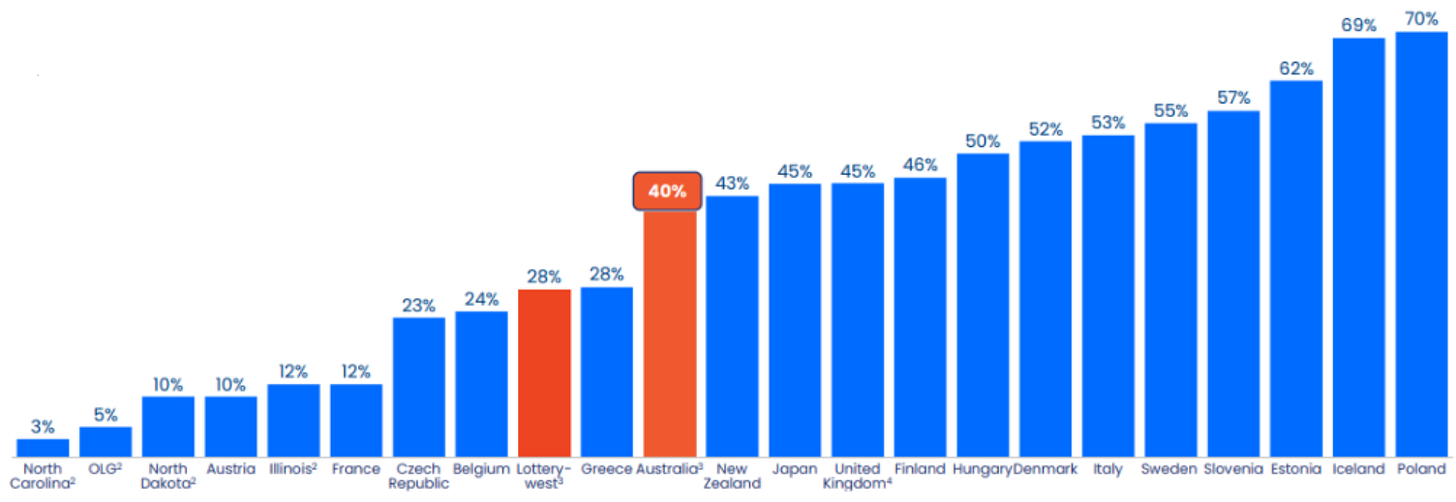


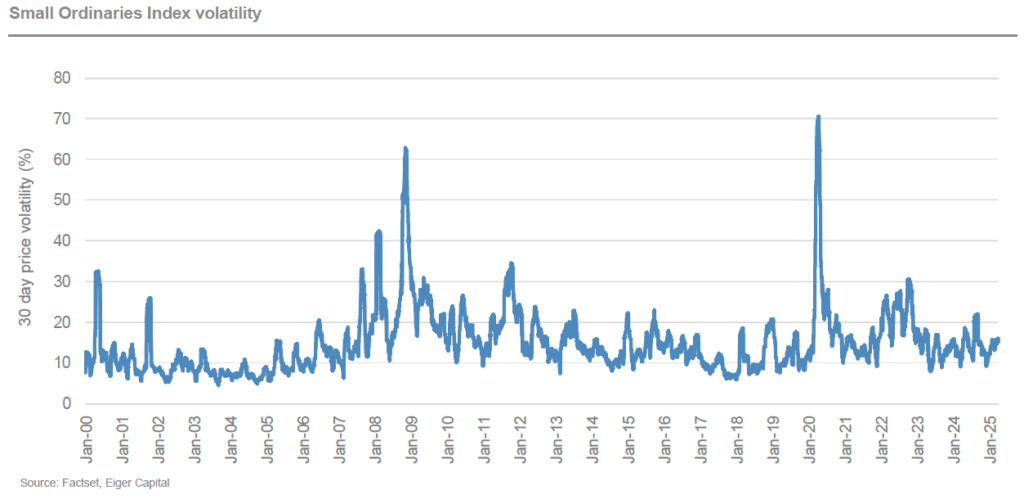
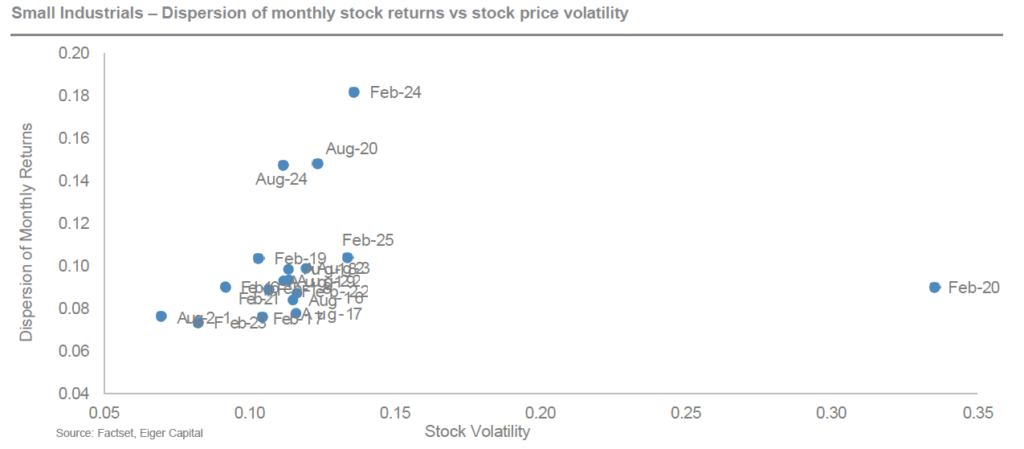
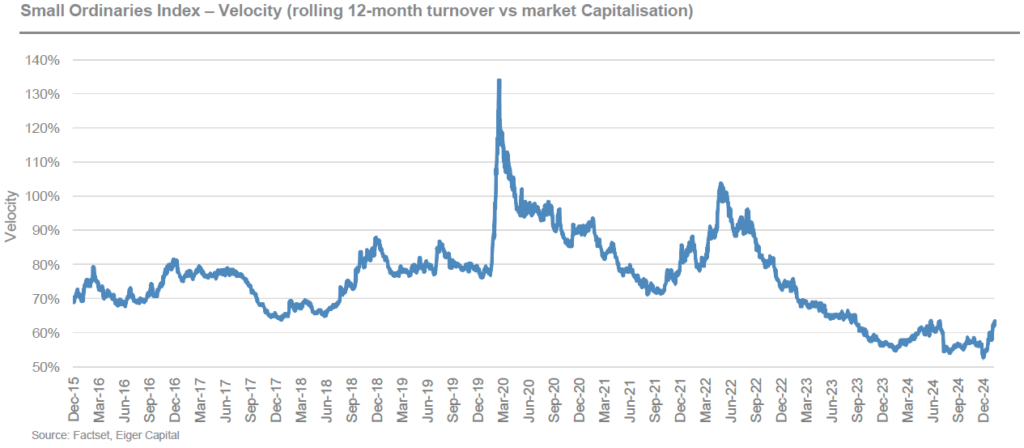

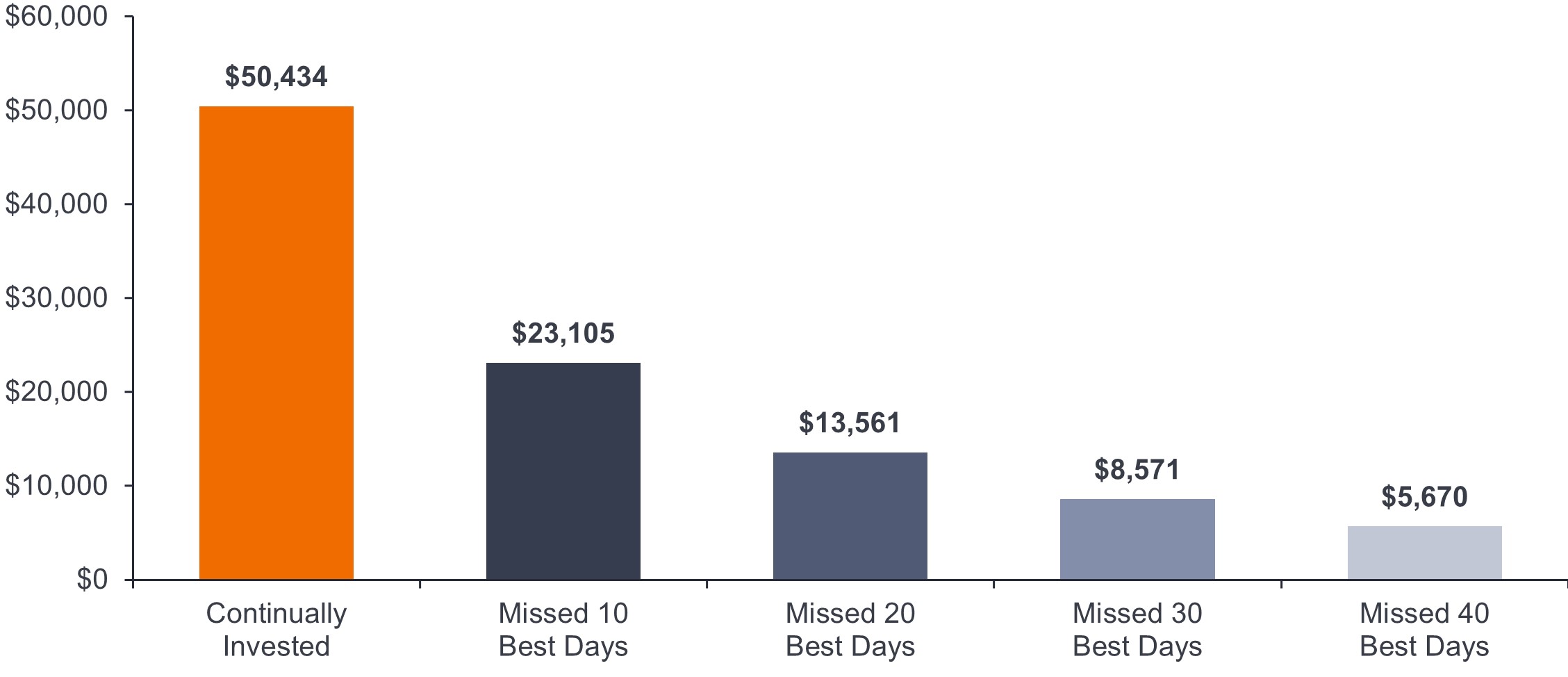
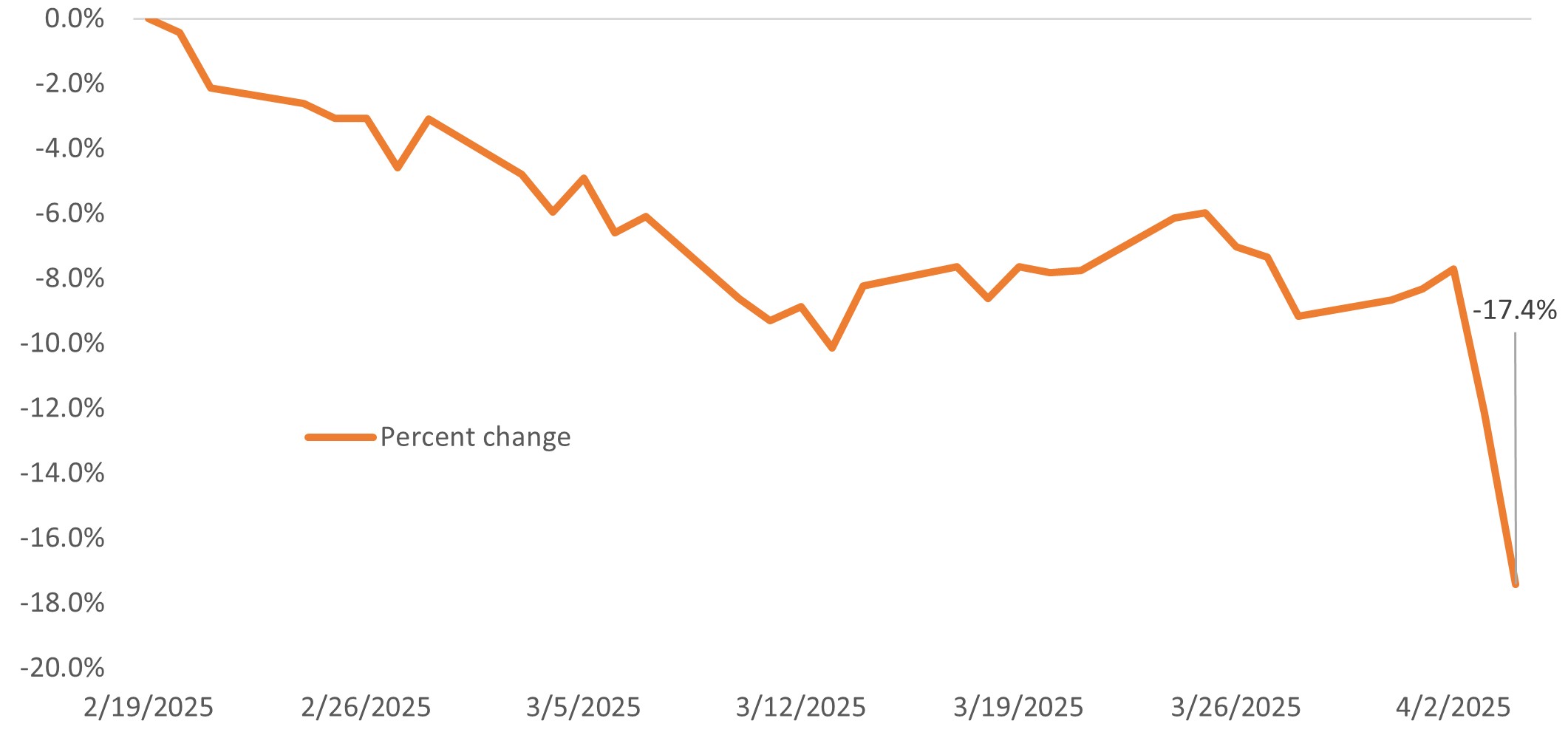
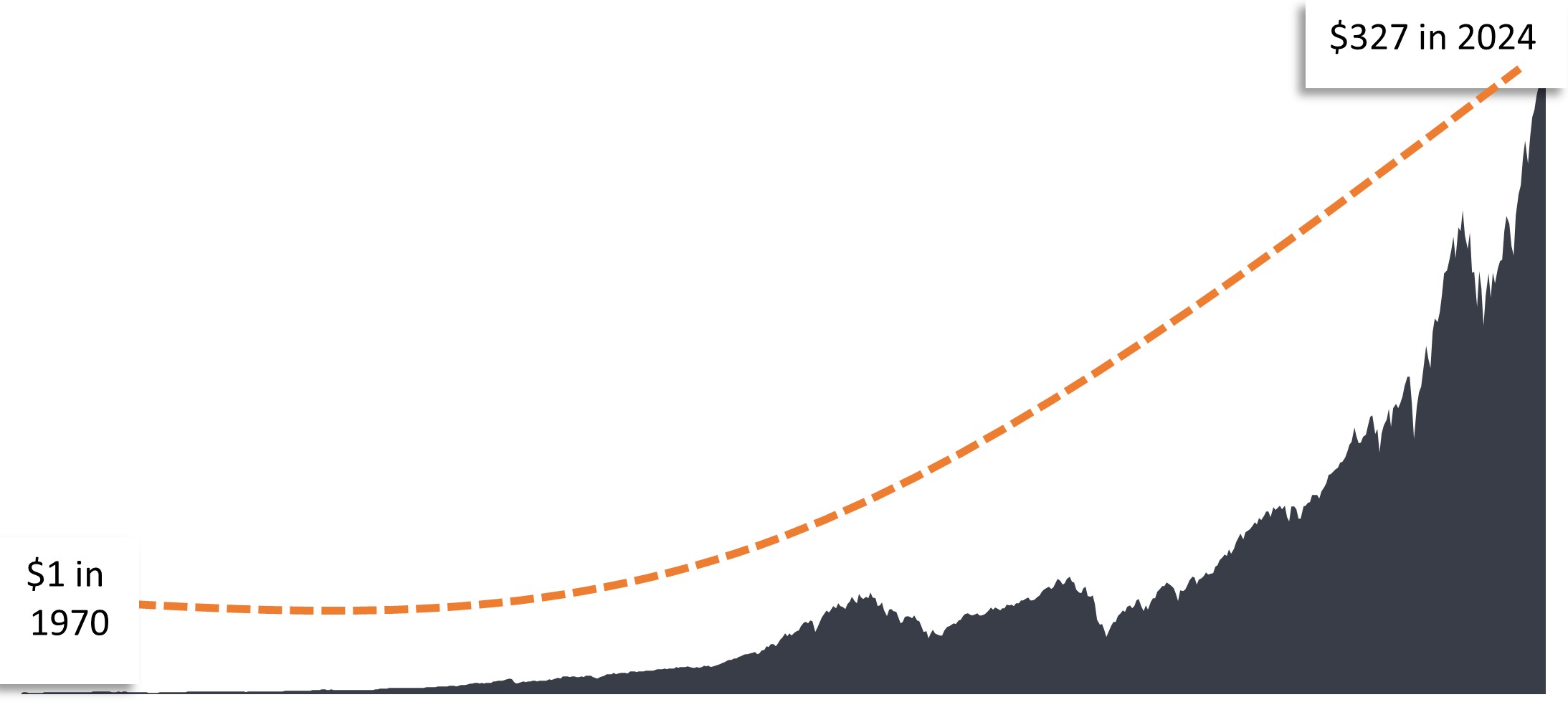 Source: Lipper, 12/31/69 - 12/31/24. U.S. Equity Market represented by the S&P 500 Index. Past performance is no guarantee of future results. Data reflects S&P 500 Total Return Index, which assumes dividend reinvestment. Index performance does not reflect the expenses of managing a portfolio as an index is unmanaged and not available for direct investment.
Source: Lipper, 12/31/69 - 12/31/24. U.S. Equity Market represented by the S&P 500 Index. Past performance is no guarantee of future results. Data reflects S&P 500 Total Return Index, which assumes dividend reinvestment. Index performance does not reflect the expenses of managing a portfolio as an index is unmanaged and not available for direct investment.
 While self-driving cars and drones are already in development, high-speed rail and hyperloop technologies are more speculative. The theoretical Transatlantic Tunnel is a high-speed, underwater rail project that would connect New York and London in under an hour, using vacuum tube technology and hyperloop trains to reach speeds of over 5,000 kph by eliminating air resistance.
While self-driving cars and drones are already in development, high-speed rail and hyperloop technologies are more speculative. The theoretical Transatlantic Tunnel is a high-speed, underwater rail project that would connect New York and London in under an hour, using vacuum tube technology and hyperloop trains to reach speeds of over 5,000 kph by eliminating air resistance.